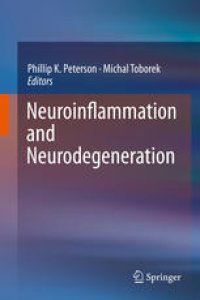
Ebook: Neuroinflammation and Neurodegeneration
- Tags: Neurosciences, Neurochemistry, Neurobiology
- Year: 2014
- Publisher: Springer-Verlag New York
- Edition: 1
- Language: English
- pdf
State of the art reviews by experts in the fields of neuroscience, immunology, microbiology/infectious diseases and pharmacology addressing the convergence of the immune system (neuroinflammation) and the loss of neurons (neurodegeneration). Many of the diseases that are discussed in the book are of epidemic proportion, e.g., Alzheimer’s disease, Parkinson’s disease, stroke, viral encephalitides and substance abuse. In addition to discussions of the involvement of neuroinflammation and neurodegeneration in these disorders, scientific reviews are presented on the cells and mediators that participate in defense of and damage to the nervous system. With rare exception, no or inadequate treatment exists for the diseases discussed in this book. An underlying premise of the book is that understanding of their shared pathogenic mechanisms will lead to improved therapies. Given the rapid evolution of the field of Neuroimmune Pharmacology, readers will find this book to be the most timely and authoritative reference on the subject of each of its chapters.
State of the art reviews by experts in the fields of neuroscience, immunology, microbiology/infectious diseases, and pharmacology addressing the convergence of the immune system (neuroinflammation) and the loss of neurons (neurodegeneration). Many of the diseases that are discussed in the book are of epidemic proportion, e.g., Alzheimer’s disease, Parkinson’s disease, stroke, viral encephalitis, and substance abuse. In addition to discussions of the involvement of neuroinflammation and neurodegeneration in these disorders, scientific reviews are presented on the cells and mediators that participate in defense of and damage to the nervous system. With rare exception, no or inadequate treatment exists for the diseases discussed in this book. An underlying premise of the book is that understanding of their shared pathogenic mechanisms will lead to improved therapies. Given the rapid evolution of the field of Neuroimmune Pharmacology, readers will find this book to be the most timely and authoritative reference on the subject of each of its chapters.